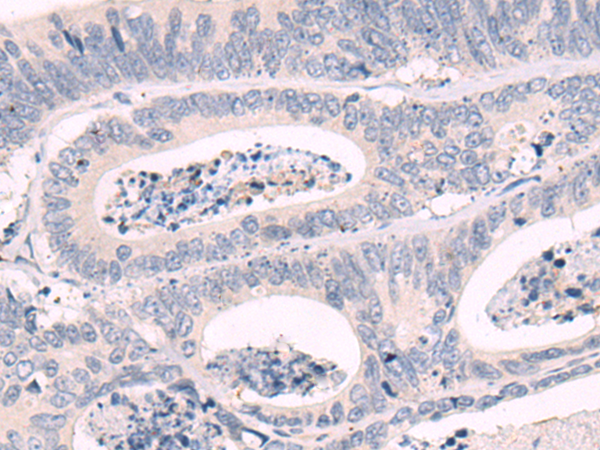


| WB | 咨询技术 | Human,Mouse,Rat |
| IF | 咨询技术 | Human,Mouse,Rat |
| IHC | 1/50-1/200 | Human,Mouse,Rat |
| ICC | 技术咨询 | Human,Mouse,Rat |
| FCM | 咨询技术 | Human,Mouse,Rat |
| Elisa | 1/2000-1/5000 | Human,Mouse,Rat |
| Aliases | BIP; GRP78; HEL-S-89n |
| WB Predicted band size | 72 kDa |
| Host/Isotype | Rabbit IgG |
| Antibody Type | Primary antibody |
| Storage | Store at 4°C short term. Aliquot and store at -20°C long term. Avoid freeze/thaw cycles. |
| Species Reactivity | Human, Mouse, Rat |
| Immunogen | Synthetic peptide of human HSPA5 |
| Formulation | Purified antibody in PBS with 0.05% sodium azide and 50% glycerol. |
+ +
以下为3篇关于HSPA5(GRP78/BiP)抗体的参考文献摘要概括:
---
1. **文献名称**:*GRP78/BiP is a novel downstream target of IGF-1 receptor mediated tumorigenesis*
**作者**:Zhang Y et al.
**摘要**:研究利用HSPA5抗体(抗GRP78)通过Western blot和免疫组化分析,发现IGF-1受体信号通过上调GRP78表达促进乳腺癌细胞存活,揭示其作为潜在治疗靶点。
---
2. **文献名称**:*Endoplasmic reticulum stress markers GRP78 and CHOP predict survival in melanoma*
**作者**:Gray MJ et al.
**摘要**:通过HSPA5抗体检测黑色素瘤组织中GRP78的表达水平,发现高表达与患者不良预后相关,提示内质网应激标志物可作为临床预后指标。
---
3. **文献名称**:*GRP78 regulates autophagy and apoptosis in neurodegenerative disease models*
**作者**:Wang M et al.
**摘要**:研究使用HSPA5抗体在小鼠神经元中定位GRP78蛋白,证实其通过调控自噬和凋亡通路在帕金森病模型中发挥神经保护作用。
---
如需具体文献链接或补充年份/期刊信息,可进一步说明。
HSPA5. also known as GRP78 or BiP, is a member of the heat shock protein 70 (HSP70) family encoded by the *HSPA5* gene. Primarily localized in the endoplasmic reticulum (ER), it functions as a critical chaperone protein facilitating protein folding, assembly, and quality control under normal conditions. During ER stress, HSPA5 dissociates from ER stress sensors (e.g., PERK, IRE1. ATF6) to activate the unfolded protein response (UPR), a adaptive mechanism to restore cellular homeostasis. Dysregulation of HSPA5 is implicated in various diseases, including cancer, neurodegenerative disorders (e.g., Alzheimer’s, Parkinson’s), and viral infections, where it often supports cell survival by mitigating stress or promoting viral entry (e.g., SARS-CoV-2).
HSPA5 antibodies are essential tools for studying its expression, localization, and interactions in both physiological and pathological contexts. They are widely used in techniques like Western blotting, immunohistochemistry, and immunofluorescence to investigate ER stress pathways, cancer progression (e.g., tumor cell survival, drug resistance), and neurodegenerative protein aggregation. Commercial HSPA5 antibodies are typically raised against specific epitopes, with validation in multiple applications. Recent research also explores HSPA5 as a therapeutic target or biomarker, highlighting its dual role in cellular protection and disease mechanisms.
×